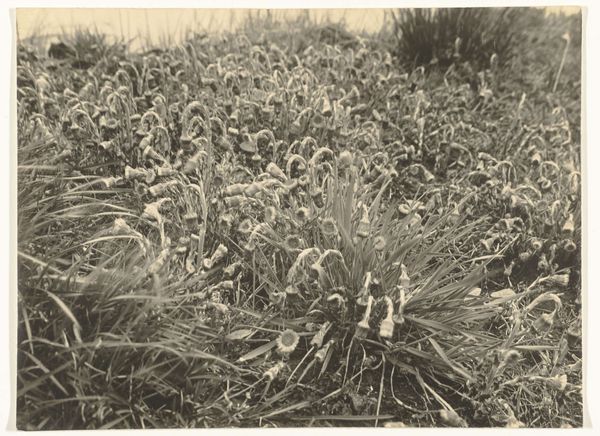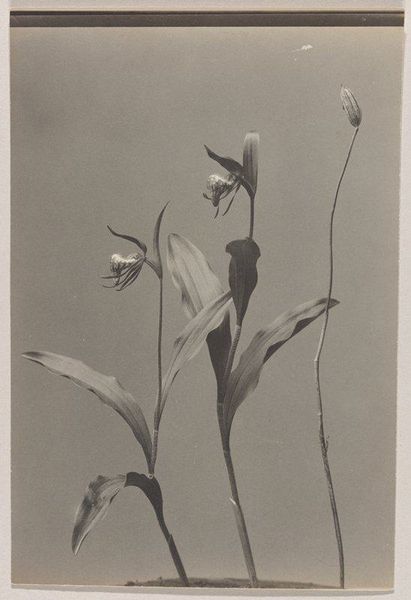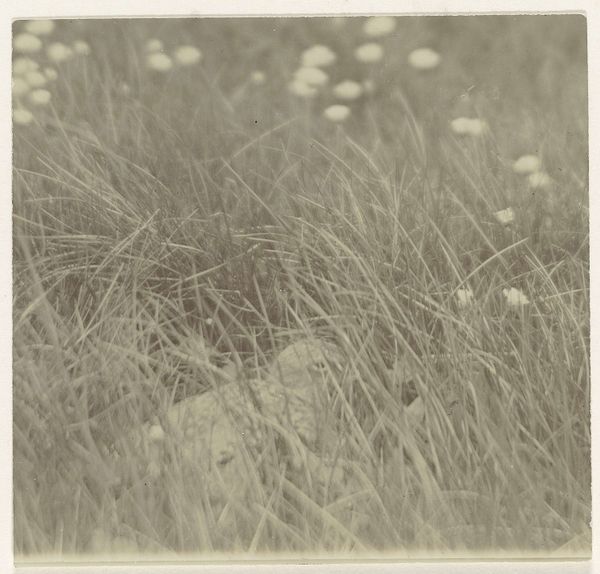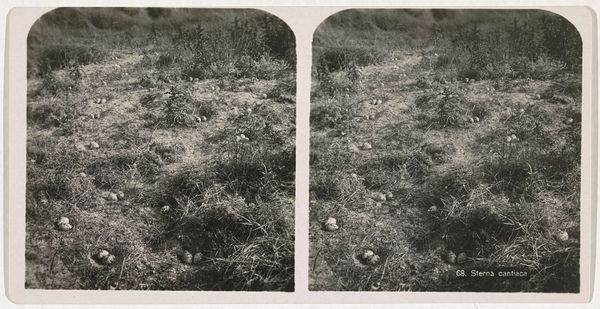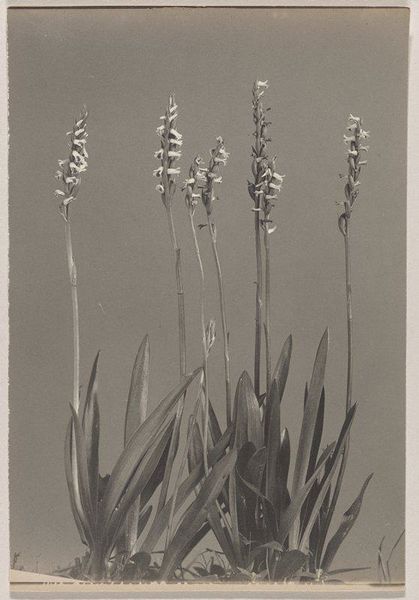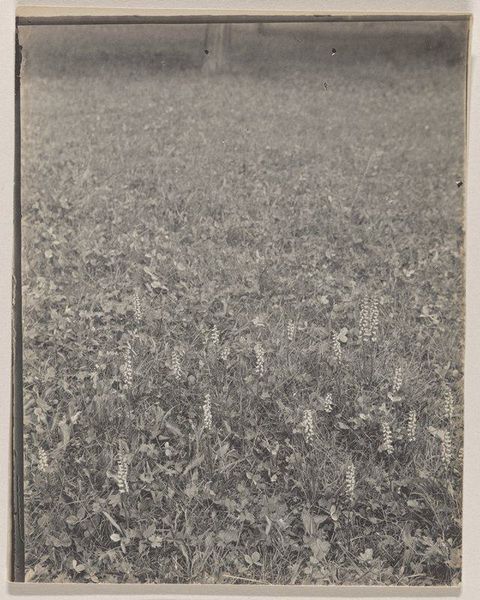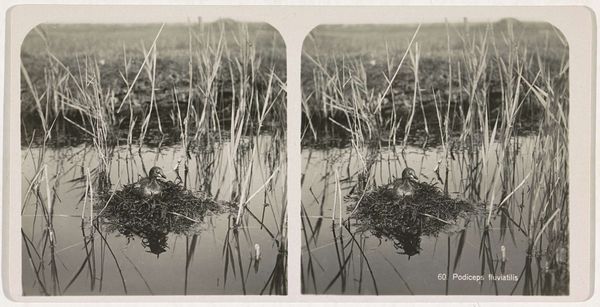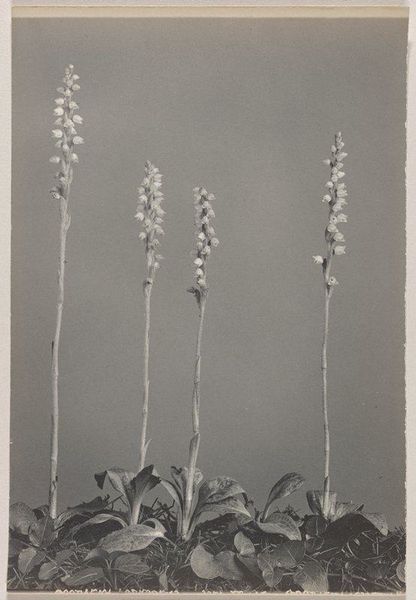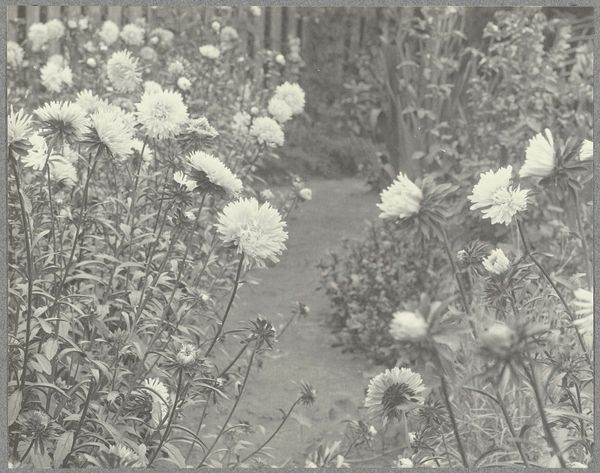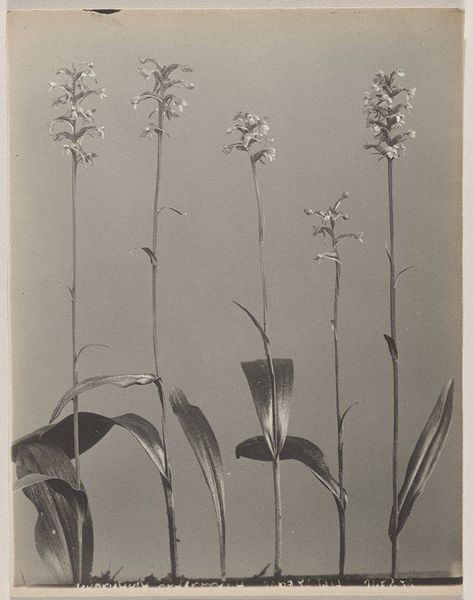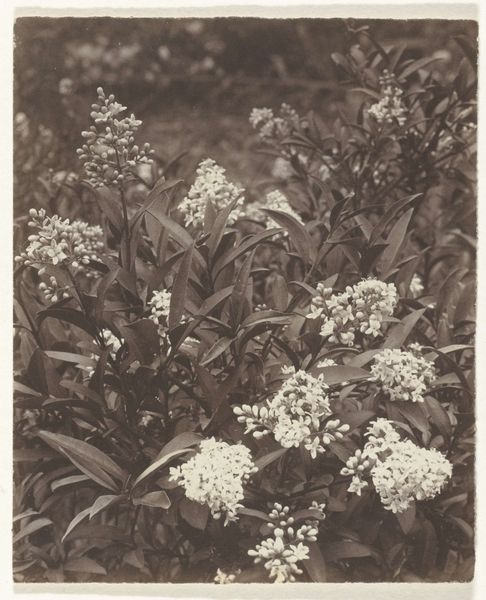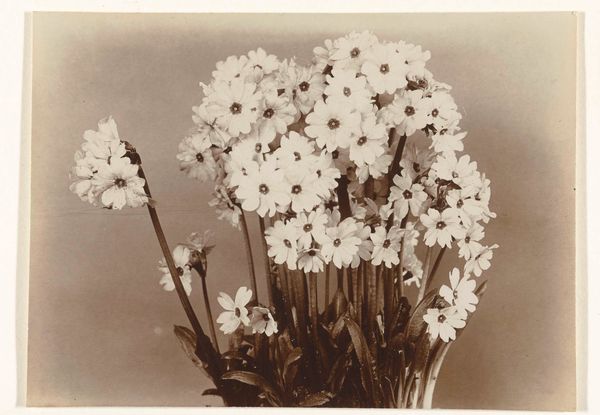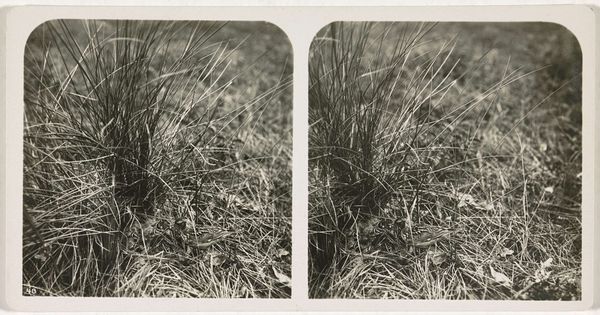
Dimensions: height 172 mm, width 227 mm
Copyright: Rijks Museum: Open Domain
Richard Tepe made this photograph, ‘Bloemen in het veld,’ using gelatin silver print, a process dominant from the 1880s onward. A thin coating of light-sensitive gelatin creates a high-resolution image, allowing the artist to capture finely detailed scenes like the tall grasses and delicate flower heads we see here. The gelatin silver process, requiring specific chemical knowledge and factory-produced materials, reflects photography's complex relationship with industrialization. Unlike painting or sculpture, photography depends on mass-manufactured goods, connecting artistic expression to the rise of consumer culture. The darkroom, acting as a small-scale laboratory, transforms light into a physical object. While the scene might appear to be a simple slice of nature, the photograph also represents labor and technology. Tepe's choice of gelatin silver printing places the artwork within histories of both artistic practice and material production. Ultimately, appreciating this photo involves recognizing not just the beauty of the subject, but also the social and technological context embedded in its making.
Comments
No comments
Be the first to comment and join the conversation on the ultimate creative platform.
